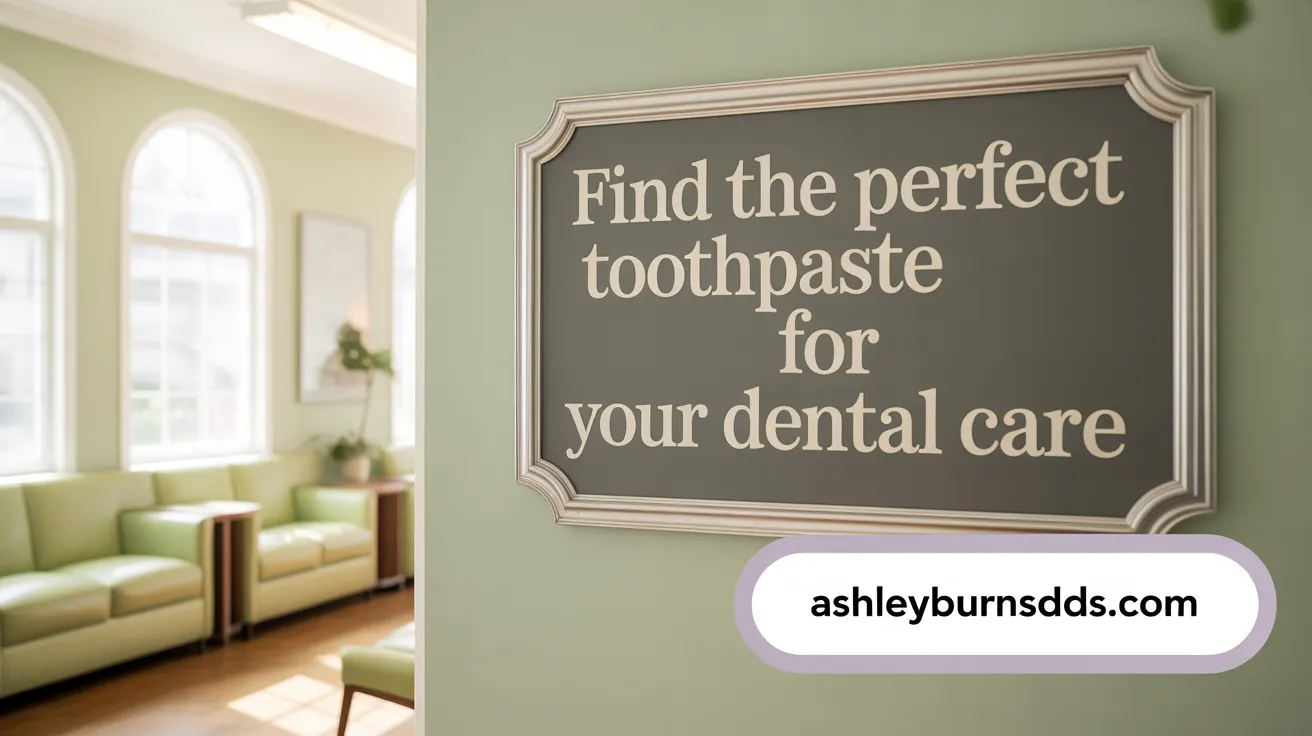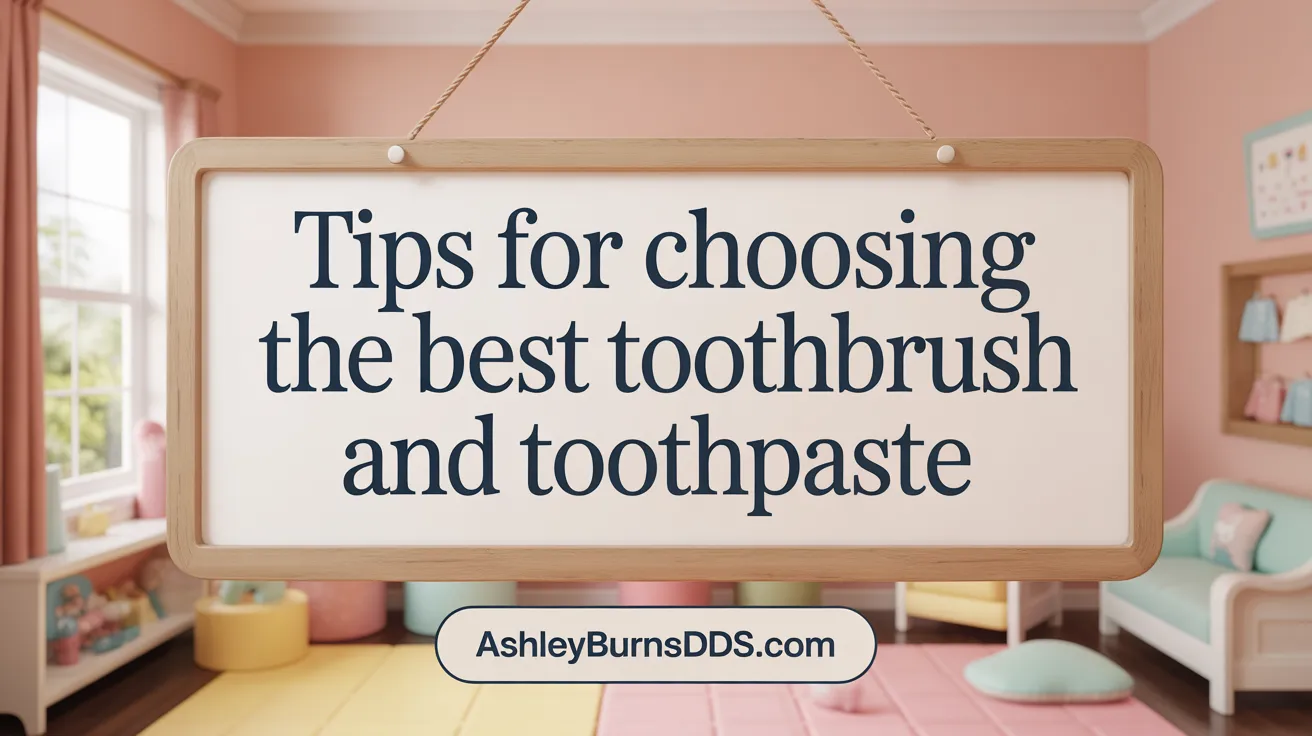Why Choosing the Right Oral Care Products Matters
Selecting the right toothbrush and toothpaste is foundational to maintaining optimal oral health. With a myriad of options available, understanding how to match products to your personal dental needs can prevent common problems such as cavities, sensitivity, and gum disease. This guide explores expert recommendations and key considerations to help you make informed decisions that promote a healthier smile.
Understanding Toothbrush Types and How to Choose the Best Fit

How do I select the appropriate toothbrush and toothpaste based on my individual oral health needs?
Choosing the right toothbrush and toothpaste is vital for maintaining good oral health. Most dentists recommend using a soft-bristled toothbrush because it effectively cleans teeth and gums without causing irritation or damage to enamel.
When selecting a toothbrush, consider the size of the head. A smaller head can reach hard-to-access areas, especially in the back of the mouth, which is essential for comprehensive cleaning. Ergonomic handle designs with features like angled or non-slip grips can make brushing easier, especially for those with mobility issues.
Both manual and electric toothbrushes are effective options. While manual brushes are budget-friendly and simple, electric toothbrushes often provide more thorough cleaning. They use oscillating or vibrating motions to remove plaque more efficiently and usually include features like built-in timers, signaling when the recommended two-minute brushing time is complete.
It's important to replace your toothbrush every three to four months or sooner if bristles become frayed. Frequently replacing brushes helps keep bacteria at bay and maintains optimal cleaning performance.
In addition to your toothbrush, choose a toothpaste suited to your specific needs. Toothpaste with fluoride is essential for strengthening enamel and preventing cavities. There are specialized options for sensitive teeth (containing potassium nitrate or stannous fluoride), whitening, tartar control, or anti-gingivitis, which target particular issues.
When shopping for oral care products, look for the ADA Seal of Acceptance. This certification guarantees that the product has been tested for safety and effectiveness.
A professional dental consultation can provide personalized guidance on the best toothbrush and toothpaste type for your unique oral health status, ensuring you get the most benefit from your daily routine.
Choosing Toothpaste: Ingredients and Formulations for Specific Needs

What role does fluoride play, and what are the recommendations?
Fluoride is crucial for strengthening tooth enamel and preventing cavities. It helps resist acid attacks from bacteria and sugars in the mouth. Dental professionals recommend using fluoride toothpaste daily, and products approved by the American Dental Association (ADA) carrying the ADA Seal ensure safety and effectiveness.
Which toothpaste is suitable for sensitive teeth?
For sensitive teeth, toothpastes containing ingredients like potassium nitrate, strontium chloride, or stannous fluoride offer relief. These compounds work by blocking nerve pathways or reducing nerve excitability, decreasing discomfort from hot, cold, or sweet stimuli.
What precautions should be taken with whitening toothpaste?
Whitening toothpastes can effectively remove surface stains and brighten smiles. However, they often contain mild abrasives that can wear down enamel if used excessively. People with sensitive teeth should avoid overusing whitening products and opt for formulas designed for gentle stain removal.
How does tartar control toothpaste work?
Tartar control toothpastes contain agents such as pyrophosphates and zinc citrate. These ingredients inhibit mineralization of plaque into tartar, helping maintain healthier gums and reducing the risk of gum disease.
What about antibacterial formulations?
Antibacterial toothpastes, which may contain triclosan or chlorhexidine, help reduce bacteria that cause plaque, gingivitis, and bad breath. Such products are often recommended for those with gum problems or at higher risk of periodontal disease.
Are natural and children's toothpastes advisable?
Natural toothpastes typically contain fewer synthetic chemicals, herbal extracts, and essential oils, appealing to those seeking organic options. Children’s toothpastes are formulated with lower fluoride levels to prevent overexposure and are flavored attractively to promote brushing.
What does the ADA Seal of Acceptance imply?
The ADA Seal indicates that a toothpaste or toothbrush has undergone rigorous testing and meets standards for safety, efficacy, and quality. Choosing products with this certification helps ensure reliable oral health support.
| Toothpaste Type | Main Ingredients | Purpose | Suitable For |
|---|---|---|---|
| Fluoride-containing | Fluoride (sodium, stannous, etc.) | Cavity prevention, enamel strengthening | Everyone, especially at risk of decay |
| Sensitive teeth | Potassium nitrate, stannous fluoride | Nerve blocking, discomfort reduction | Sensitive teeth |
| Whitening | Mild abrasives, bluish pigments | Surface stain removal | Overall, with caution in sensitive mouths |
| Tartar control | Pyrophosphates, zinc citrate | Tartar formation prevention | Those prone to tartar buildup |
| Antibacterial | Triclosan, chlorhexidine | Reduce plaque, gingivitis | Gum health concerns |
| Natural | Organic ingredients, herbal extracts | Fewer chemicals, eco-friendly | Eco-conscious users, those with allergies |
| Children's | Lower fluoride, child-friendly flavors | Safe if swallowed, cavity prevention | Kids under 6 |
Choosing the right toothpaste involves considering your specific dental needs, preferences, and ensuring the product bears the ADA Seal for safety and efficacy. Regular use combined with proper brushing technique and dental checkups promotes long-term oral health.
Key Factors to Consider When Selecting Your Toothbrush and Toothpaste

What factors should I consider when choosing a toothbrush and toothpaste?
Selecting the right oral care products is essential for maintaining healthy teeth and gums. For toothbrushes, softer bristles—preferably soft or extra-soft—are recommended because they clean effectively without irritating gums or damaging enamel.
The size of the toothbrush head is also important. A smaller head can reach hard-to-access areas, especially in the back of the mouth, ensuring a thorough cleaning. Handle features such as ergonomic design or non-slip grips can increase comfort and control during brushing.
When choosing toothpaste, fluoride content is crucial. Fluoride helps strengthen enamel and prevents cavities, making it a staple in most dental routines. For specific concerns like sensitivity, whitening, or gum health, specialized toothpaste formulations are available. For example, sensitivity toothpaste often contains potassium nitrate or stannous fluoride to reduce discomfort.
Brand reputation, dentist recommendations, and the presence of the ADA (American Dental Association) Seal of Acceptance are important considerations. These marks indicate that the product has been tested for safety and efficacy.
Lifestyle factors, such as the presence of orthodontic appliances like braces, can influence product choice. Orthodontic toothbrushes and specific toothpaste designed to clean around brackets and wires are recommended.
Ultimately, personal comfort and individual dental needs should guide your selection, ensuring you adhere to good oral hygiene practices consistently.
Best Practices for Effective Oral Hygiene and Maintaining Oral Health

What are some tips for effective oral hygiene and proper oral care routines?
Maintaining good oral health begins with simple, consistent habits. Start by brushing your teeth twice a day for at least two minutes each session. Use a soft-bristled toothbrush and fluoride toothpaste to gently clean all tooth surfaces, including the tongue, which helps remove bacteria and freshen breath. Employ gentle circular motions at a 45-degree angle directed toward the gum line to effectively remove plaque without harming your gums.
In addition to brushing, daily flossing is essential to remove plaque and debris from between teeth where a toothbrush cannot reach. This helps prevent cavities and gum disease.
The type of toothbrush matters. Choose a toothbrush with a small head to access hard-to-reach areas, especially in the back of your mouth. For extra cleaning power, electric toothbrushes can be more effective than manual brushes, particularly for individuals with limited dexterity or those prone to vigorous brushing.
To keep your toothbrush in optimal condition, replace it every three to four months or sooner if the bristles become frayed or after illness, to prevent bacterial buildup.
Regular dental visits—at least twice a year—are vital. Professional cleanings remove tartar and help identify potential problems early. Dentists can also provide personalized tips tailored to your specific dental needs.
Finally, complement your oral care routine with a balanced diet low in sugary foods, and avoid tobacco use, which can significantly impair oral health. These habits, combined with effective brushing, flossing, and regular checkups, form the foundation of a healthy smile and long-term oral wellness.
Leveraging Expert Advice to Personalize Your Oral Care Regimen

How can expert advice help optimize oral hygiene practices?
Dental professionals play a crucial role in guiding individuals towards effective oral care routines. They offer tailored recommendations on selecting the most suitable toothbrushes and toothpastes based on specific needs such as sensitivity, whitening, or gum health.
For example, a dentist can suggest a soft-bristled toothbrush to minimize gum damage or recommend fluoride toothpaste to strengthen enamel and prevent cavities.
Proper brushing technique is another vital area where professional advice is invaluable. Dentists or hygienists demonstrate the correct way to hold the toothbrush at a 45-degree angle and use gentle circular motions, ensuring thorough plaque removal without harming gums or enamel.
In addition to routine guidance, experts help craft personalized lifestyle habits, like frequency of brushing and flossing, as well as dietary recommendations to reduce sugar intake.
Regular dental visits, where early signs of issues like decay or gum disease are detected, are essential parts of an optimized oral care plan. Early identification allows for less invasive and more effective treatments.
Through ongoing professional consultations, patients stay informed about advancements in dental products and practices. This continuous advice helps reinforce evidence-based habits, making oral hygiene more effective and less burdensome.
Ultimately, expert guidance not only improves immediate oral health but also contributes to long-term benefits such as maintaining a bright smile, preventing systemic health problems linked to oral diseases, and reducing costly dental interventions.
Personalize Your Oral Care for a Lifetime of Healthy Smiles
Choosing the right toothbrush and toothpaste tailored to your individual oral health needs is essential for effective cleaning and prevention of common dental issues. Soft-bristled brushes, fluoride toothpastes, and specialized formulations address diverse concerns like sensitivity, plaque, and gingivitis. Adopting proper brushing techniques, maintaining routine oral hygiene practices, and seeking professional advice empower you to optimize your oral health. Regular product replacement and informed product selection supported by the ADA Seal give you confidence in your choices. By investing attention in these areas, you establish a strong foundation to maintain a bright, healthy smile for life.
References
- How to Choose the Right Toothbrush and Toothpaste
- Choosing the Right Toothbrush and Toothpaste for Your Needs
- Choosing The Right Toothbrush | Colgate®
- Choosing the Right Toothbrush and Toothpaste - Dynamic Dental
- How to Choose the Right Toothbrush and Toothpaste
- How to Choose the Right Toothpaste and Toothbrush?
- How to Choose the Right Toothbrush and Toothpaste
- Choosing the Best Toothbrush & Toothpaste for Your Oral Health ...
- How to Choose the Right Toothbrush and Toothpaste
- How to Choose the Right Toothbrush and Toothpaste
